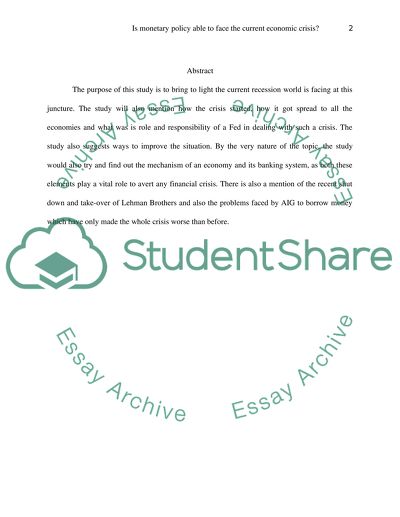Cite this document
(Monetary Policy and Economic Crisis Case Study Example | Topics and Well Written Essays - 2250 words, n.d.)
Monetary Policy and Economic Crisis Case Study Example | Topics and Well Written Essays - 2250 words. Retrieved from https://studentshare.org/macro-microeconomics/1509268-monetary-policy-and-economic-crisis
Monetary Policy and Economic Crisis Case Study Example | Topics and Well Written Essays - 2250 words. Retrieved from https://studentshare.org/macro-microeconomics/1509268-monetary-policy-and-economic-crisis
(Monetary Policy and Economic Crisis Case Study Example | Topics and Well Written Essays - 2250 Words)
Monetary Policy and Economic Crisis Case Study Example | Topics and Well Written Essays - 2250 Words. https://studentshare.org/macro-microeconomics/1509268-monetary-policy-and-economic-crisis.
Monetary Policy and Economic Crisis Case Study Example | Topics and Well Written Essays - 2250 Words. https://studentshare.org/macro-microeconomics/1509268-monetary-policy-and-economic-crisis.
“Monetary Policy and Economic Crisis Case Study Example | Topics and Well Written Essays - 2250 Words”, n.d. https://studentshare.org/macro-microeconomics/1509268-monetary-policy-and-economic-crisis.


